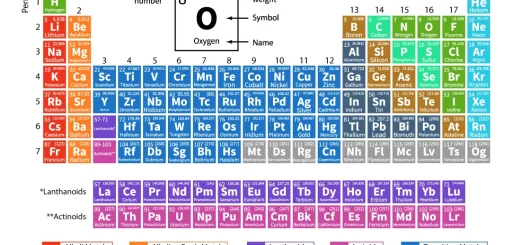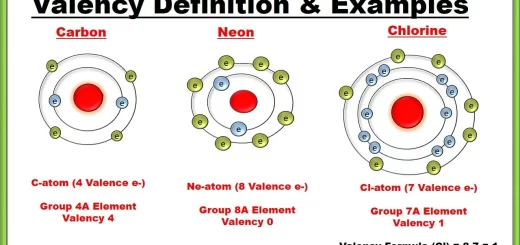Qualitative analysis, Detection for Acidic radicals (anions) and Basic radicals (cations)
Water is used to differentiate between sodium carbonate and calcium carbonate because sodium carbonate is soluble in water, while calcium carbonate is insoluble in water, Hydrochloric acid is used as a reagent for the anions of the group (I) because it is more stable than those acids from which these anions are derived.
Concentrated sulphuric acid group
This detection is based on that concentrated sulphuric acid is more stable than the acid from which these anions are derived, on adding concentrated hot sulphuric acid to the salts of these anions, it displaces these acids which appear in the form of gases and can be detected by the suitable reagent.
The main experiment
Add concentrated sulphuric acid to the solid salt and heat if necessary.
Chloride (Cl−)
HCl gas is evolved which is colourless, it gives white fumes with a glass rod wet with ammonia solution.
2 NaCl + H2SO4 → Na2SO4 + 2 HCl
HCl + NH3 → NH4Cl
Salt solution + silver nitrate solution → white ppt is formed from silver chloride which turns violet in sunlight, soluble in conc. ammonia solution.
NaCl + AgNO3 → AgCl + NaNO3
Bromide (Br−)
HBr gas is evolved, which is colourless, it is partially oxidized by sulphuric acid and orange-red fumes from bromine will be separated turns a paper wet by starch yellow.
2 NaBr + H2SO4 → Na2SO4 + 2 HBr
2 HBr + H2SO4 → 2 H2O+ SO2 + Br2
Salt solution + silver nitrate solution → white-yellow ppt is formed from silver bromide which turns dark in sunlight soluble slowly in conc. ammonia.
NaBr + AgNO3 → AgBr + NaNO3
Iodide (I−)
(H I) gas is evolved which is colourless, it partially oxidized quickly by sulphuric acid and violet fumes from iodine will be separated after the heat turns a paper wet by starch blue.
2KI + H2SO4 → K2SO4 + 2HI
2HI + H2SO4→ 2H2O + SO2 + I2
Salt solution + silver nitrate solution → yellow ppt is formed from silver iodide insoluble in ammonia solution.
NaI + AgNO3 → AgI + NaNO3
Nitrate (NO3−)
Brown vapour of nitrogen dioxide evolves due to the decomposition of the HNO3, The density of vapour increased by adding copper felling.
2NaNO3 + H2SO4 → Na2SO4 + 2HNo3
4HNO3 → 2H2O + 4NO2 + O2
4HNO3 + Cu → Cu (No3)2 + 2H2O + 2NO2
The brown ring test: Nitrate salt solution + freshly prepared solution of iron II sulphate + few drops of conc. H2SO4 are carefully added on the inner surface of the tube, A brown ring appears at the interface of acid and reactant solutions disappear by heat or shaking.
2 NaNO3 + 6 FeSO4 + 4 H2SO4 → Na2SO4 + 3 Fe2 (SO4)3 + 4 H2O + 2 NO
FeSO4 + NO → FeSO4.NO (Brown ring compound)
Barium chloride solution group
This test is based on the fact that the anions of this group do not react with dil HCl or conc. H2SO4 but they give ppt. when reacting with barium chloride solution.
Phosphates (PO43−)
Salt solution + barium chloride solution → a white ppt. of barium phosphate soluble in Dil HCl.
2 Na3PO4 + 3BaCl2 → Ba3 (PO4)2 + 6 NaCl
Salt solution + silver nitrate solution → yellow ppt. is formed from silver phosphate soluble in both ammonia solution and nitric acid.
Na3PO4 + 3AgNO3 → Ag3PO4 + 3NaNO3
Sulphate (SO42−)
Salt solution + barium chloride solution → a white ppt. of barium sulphate insoluble in dil HCl
Na2SO4 + BaCl2 → BaSO4 + 2NaCl
Salt solution + lead (II) acetate solution → a white ppt. of lead (II) sulphate
Na2SO4 + (CH3COO)2Pb → 2CH3COONa + PbSO4
Barium chloride is used as a reagent for phosphate and sulphate anions because they don’t react with either dilute hydrochloric acid or concentrated sulphuric acid, but they react with barium chloride & give ppt.
Basic radical (Cations)
Identification of basic radicals is more complicated than that of acidic radicals due to the presence of a great number of basic radicals and also due to their interference with each other, It is difficult to separate them from each other, also the same radical may have more than one oxidation state, The confirmatory test is limited.
Classification of Basic Radicals
Basic radical are divided into six analytical groups, and each group has its reagent which is called group reagent, The group reagent reacts with the salt solution to give an insoluble salts precipitated, Identification of the basic radicals depends upon the properties of the precipitate, The basic radicals of the salt to be identified are in the form of solutions.
Classification depends on differing in solubility of the salts of these metals in water, for example, metal chloride of the first analytical group which are chloride of silver (I), mercury (I), lead (II) are sparingly soluble in water, so, they can be precipitated as chloride on adding the group reagent which is dil hydrochloric acid.
Second analytical group
Cations of this group are precipitated in the form of sulphides in acidic medium, by dissolving the salt in water and adding dilute Hydrochloric acid to it to make solution acidic then passing hydrogen sulphide gas to it, Cu2+ is one from this group.
Copper test (II) cation Cu2+: Copper (II) salt solution + group reagent (HCl + H2S), black ppt. from copper (II) sulphide is formed soluble in hot nitric acid.
CuSO4 + H2S → H2SO4 + CuS
Third analytical group
They are precipitated as hydroxides using ammonium hydroxide if they are not mixed with other cations, Cations such as Al3+, Fe2+, Fe3+.
Aluminium Al3+
Al2(SO4)3 + 6 NH4OH→ 3(NH4)2SO4 + 2Al (OH)3
White gelatinous ppt. of Aluminium hydroxide soluble In dil Acids and in Caustic soda.
Salt solution + sodium hydroxide solution → white gelatinous ppt. of Aluminum hydroxide soluble in excess sodium hydroxide forming sodium meta aluminate.
Al2(SO4)3 + 6 NaOH → 3 Na2SO4 + 2 Al (OH)3
Al (OH)3 + NaOH → NaAlO2 + 2 H2O
Iron (II) Fe2+
FeSO4 + 2NH4OH → (NH4)2SO4 + Fe (OH)2
White ppt. turns white green when it exposed to air and soluble in acids.
Salt solution + sodium hydroxide solution → white green ppt. of iron (II) hydroxide is formed.
FeSO4 + 2 NaOH → Na2SO4 + Fe (OH)2
Iron (III) Fe3+
FeCl3 + 3 NH4OH → 3 NH4Cl + Fe (OH)3
Reddish brown gelatinous ppt. soluble in acids.
Salt solution + sodium hydroxide solution → Reddish brown ppt. of iron (III) hydroxide is formed.
FeCl3 + 3NaOH→ 3NaCl + Fe (OH)3
Fifth analytical group
Cations of this group are precipitated as carbonates by addition of ammonium carbonate.
Salt solution + ammonium carbonate solution (group reagent)
Calcium Ca2+
CaCl2 + (NH4)2CO3 → 2 NH4Cl + CaCO3
a white ppt. of calcium carbonate soluble in dil HCl and also in water containing CO2.
CaCO3 + H2O + CO2 → Ca(HCO3)2
Salt solution + dil sulphuric acid→ A white ppt. of calcium sulphate is formed.
CaCl2 + H2SO4→ 2HCl + CaSO4
Flame test: Volatile calcium cation gives bunsen a brick red colour.
Quantitative analysis, Gravimetric analysis, Standard solutions, Precipitation & Titration



